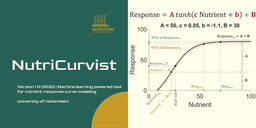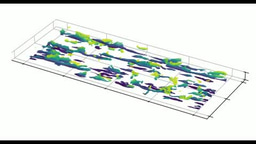Fishing for subsistence constitutes a livelihood safety net for populations dependent upon aquatic foods around the world
Published in Sustainability
Many of the people worldwide who depend upon fishing the oceans, lakes and rivers for food and jobs are “informal” workers, meaning they are not counted by governments (and often not considered for provision of public services). The old saying that what is not counted does not count has proven to be true for many policy-makers: such fish workers and their communities have often been ignored by governments as their rights and resources are lost. These workers are typically engaged in food production systems based on relatively lower-technology fishing operations, that have been termed “small-scale fisheries” (though not universally defined).
To help ensure that small-scale fisheries and the workers they support are better counted and more visible to policy-makers, in 2017 the United Nations Food and Agriculture Organization, Duke University and WorldFish began a global study entitled Illuminating Hidden Harvests (IHH) to compile available data from different sources and at different levels, to try to better understand the diverse contributions these aquatic food systems make to sustainable development. The study was conducted over a five-year period and included over 800 contributors worldwide to compile data in 58 countries, among other sources of information.
From this unprecedented systematic global effort, a number of specific studies are emerging, highlighting the different contributions of small-scale fisheries to society. These include a study on the affordability of critical micro-nutrients from wild-caught fish in 39 low and middle-income countries, a set of case studies on the role of small-scale fisheries in food and economic security in three lower-income countries, and finally a case study on the contribution of small-scale fisheries to food security in a wealthy nation, among others currently in preparation.
Perhaps one of the most common questions asked by policy-makers about food production systems such as small-scale fisheries is: how many livelihoods do they support (narrowly defined as jobs, or more broadly defined as the capabilities, assets and activities required for a means of living)? Since at least 1980, a number of studies have attempted to estimate this global total, using a range of methods. As part of the global IHH study we had access to previously underutilized sources of data to provide the most accurate estimate to date. Drawing on datasets from 78 national household surveys we were able to take into account for the first time seasonal differences in activities such as fishing or farming. These data also allows to distinguish between livelihoods participating in these food systems for commercial employment and for subsistence, disaggregated by gender. Extrapolating from these national survey datasets to the global level, we estimated that in 2016 roughly 1 out of every 50 jobs on the planet in 2016 were related to small-scale fisheries, 52.8 million people worldwide were engaged in subsistence fishing at some point during the year (45% of whom were women), while another 60.2 million people were commercially employed (90% of global fisheries employment).
The measure and prevalence of subsistence fishing as a type of livelihood supported by small-scale fisheries not only reinforces how “hidden” or uncounted much of this activity may be (as there are no transactions in the marketplace), but also the role these fisheries can play in food and economic security, often as a safety net for vulnerable populations. For example, comparing the results with scores of the World Risk Index of vulnerability to climatic and natural disasters, we find that 57% of estimated subsistence fish workers are located in countries ranked as having ‘high’ or ‘very high’ vulnerability (87% if China is excluded). Similarly, more detailed surveys in seven countries (representing 23% of the global total of subsistence fish workers) illustrate the role these fisheries play in absorbing excess labor (on average 40% of the subsistence fish workers were outside of the formal labor force entirely) and supporting multiple occupations (with workers often participating in agriculture as well). The catch from subsistence fishing also provides an important nutritional safety net in 14 countries where data were available (representing 4% of the global fish catch), providing an apparent daily supply for fish workers and their households (112.5 million people) equivalent on average to 26% of their daily recommended nutrient intakes of six key nutrients common in global micronutrient deficiencies driving poor health outcomes: iron, zinc, selenium, calcium, vitamin A and omega-3 fatty acids, based on daily consumption of 100 grams of fish.
To be clear, these measures and estimates have caveats. The surveys typically recorded if someone engaged in subsistence fishing at least once within the last year, providing little data on frequency. However, in seven countries representing an estimated 23% of the global total of subsistence fish workers, the data provided more detail, showing that on average subsistence fish workers spent 4.2 hours per week on this activity. This suggests to us that persons engaged in subsistence fishing typically do so far more frequently than the minimum recorded in the remainder of the surveys (i.e., one fishing event per year).
Using these estimates of subsistence fishing as a proxy measure, we have quantified at the global level for the first time what has been observed and documented through isolated case studies around the world: small-scale fisheries have a safety net function for helping to prevent food and economic insecurity. This new evidence is highly relevant for policy-making, in particular in relation to preventing or limiting household poverty of vulnerable populations in coastal and riparian environments. At a crucial time of climate and economic instability our study strongly suggests policy-makers should develop more specific policies to support this ‘hidden’ dimension of small-scale fisheries, as a livelihood safety net, particularly in Africa and Asia where most of the world’s small-scale fisheries are found.
Follow the Topic
-
Nature Food

This journal aims to provide researchers and policy-makers with a breadth of evidence and expert narratives on optimising and securing food systems for the future.






Please sign in or register for FREE
If you are a registered user on Research Communities by Springer Nature, please sign in